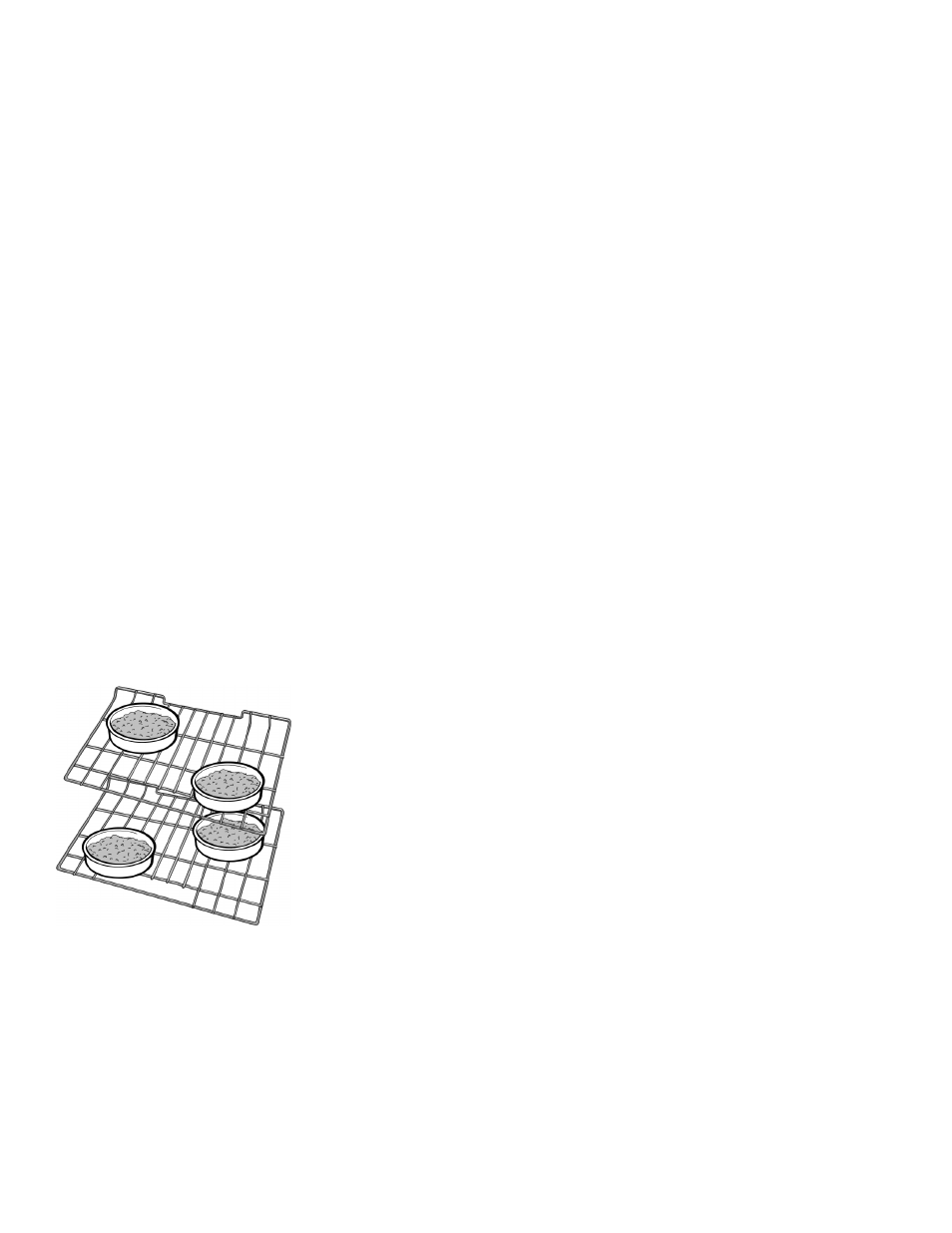Tips, Convection bake, Multi-rack – Bosch 800 Series 30 Inch Freestanding Dual Fuel Range Use and Care Manual User Manual
Page 24: Proof, Pizza

24
Tips
▯
Preheat the oven if the recipe recommends it.
▯
Baking time will vary with the size, shape and finish of
the bakeware. Dark metal pans or nonstick coatings
will cook faster with darker results. Insulated bakeware
will lengthen the cooking time for most foods.
▯
For best results, bake food on a single rack with at
least 1–1
^
" space between pans or dishes and oven
walls.
▯
Eliminate heat loss from the oven by using the window
to periodically check food for doneness instead of
opening the door.
Convection Bake
Convection Bake is similar to Bake. Heat comes from the
upper and lower heating elements. The main difference
in convection baking is that the heat is circulated
throughout the appliance by the convection fan.
Convection Bake mode is well suited for cakes, bar
cookies and breads to take advantage of the bottom
heat, yielding a better crust on baked items.
The benefits of Convection Bake include:
▯
Slight decrease in cooking time.
▯
Higher volume (yeast items rise higher).
Tips
▯
Place food in shallow, uncovered pans, such as
cookie sheets without sides.
▯
If baking more than one pan on a rack, allow at least
1–1
^
" of air space around the pan.
▯
For cakes, use rack positions 2
and 5. Stagger pans
so that one is not directly above the other (see
following graphic).
Multi-Rack
Convection Multi-Rack cooks with heat from a third
element behind the back wall of the oven. The heat is
circulated throughout the oven by the convection fan.
Convection Multi-Rack is well suited for cooking
individual serving-sized foods such as cookies and
biscuits. It is also good for cooking on multiple racks
(2
or 3) at the same time. Baking cookies is possible on
5
racks simultaneously. In this case, the baking time
increases slightly.
The benefits of Convection Multi-Rack include:
▯
Even browning.
▯
Time savings as a result of using multiple racks at one
time.
Tips
▯
Place food in low-sided, uncovered pans such as
cookie sheets without sides.
▯
If baking more than one pan on a rack, allow at least
1" to 1
^
" of air space around the pan. Stagger pans
so that one is not directly above the other.
Proof
In Proof mode, the appliance uses the lower elements to
maintain a low temperature to proof bread or other yeast
doughs.
▯
No preheating is necessary.
▯
Proofing is the rising of yeast dough.
▯
In Proof mode, the temperature is 85 °F (30 °C) to
125 °F (50 °C).
▯
Loosely cover the bowl or pan and use any rack that
accommodates the size of the container.
▯
Keep the door closed and use the oven light to check
the rising of the dough.
Pizza
In Pizza mode, heat from the upper and lower elements
is circulated throughout the oven by the convection fan.
Use Pizza mode for fresh or frozen pizza.
Tips
▯
When baking a frozen pizza:
For a crispy crust, place directly on the rack.
For a softer crust, use a pizza pan.
▯
When proofing pizza dough, coat dough with olive oil
and cover it in a bowl tightly with plastic wrap to
prevent crust formation.
▯
Sprinkle cornmeal on the pizza pan to prevent sticking.
▯
If using a pizza paddle, sprinkle the paddle liberally
with cornmeal for ease in transferring the dough to the
pan.
▯
If par baking handmade pizza dough, prick the dough
with a fork before baking.
▯
If using a pizza pan, choose a dark, perforated pan for
a more crisp crust and a non-perforated pan for a
softer crust.
▯
Preheat baking stones following manufacturer’s
recommendations while the oven is preheating.
▯
Bake homemade pizzas on rack position 2
in the
center of the rack.
▯
Follow manufacturer’s directions for frozen pizza.
